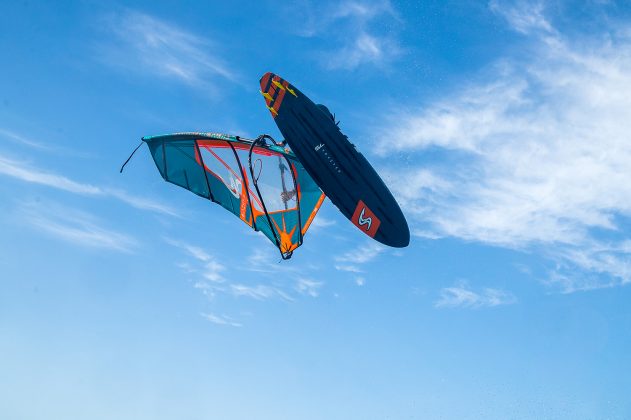LOWDOWN: THE SIMMER QUANTEX
Ola Helenius, Simmer Style Board designer, gives us the lowdown on the ‘Quantex’ wave board.
WORDS – Ola Helenius // PHOTOS – Christer Holm/Wave Action (portrait), Pablo Ramírez Bolaños / Salty Drops (action).
Around 10 years ago, Kai Katchadourian and I had rented a bunch of freewave boards to test against our own two Simmer prototypes. It was the only day we could test together, because Kai was leaving Maui soon afterwards. We sailed Kanaha, but it was far from freewave conditions, with the swell well over mast high. Dropping in on the 85-litre freewave boards was really out of control… until I got onto the proto that later became the first Simmer Freewave. That board had fantastic rail control.
- Ola Helenius
New theory
It was not only that our board was a thruster and the others were single fins. It was also a magic bottom shape designed according to a new theory. I had been amazed by the glide of my 60-litre speed board. So I designed wave board rockers based on minimizing drag at a given total curvature. I used foil-like profiles where the rocker went progressively straighter towards the tail. In the single fin days, you needed tail kick for tight turns, but with multi-fin arrangements you could do without it I figured.
Years later when Kai and I were designing his Pe’ahi (Jaws) board, we remembered the crazy freewave testing day and decided to base the Pe’ahi board on the freewave rocker. The board was so good that Kai took it out at Ho’okipa at times, so later we designed a shorter and wider version. At the same time, the Tomo Vanguard surfboard was becoming popular. A few years before I had designed the super short Frugal and Freegal series of boards. These boards had a lot of curvature crammed into a short package. The Vanguard instead essentially was the centre part of a long and sleek shape, with the tail and nose cut off. An advantage of a low curvature outline is the good glide when it is put on rail. So while designing Kai’s Hookipa board, I also designed a Vanguard style shortened version. This board was an instant success and after prototyping some further sizes, this became the Simmer Cortex production range.
History
But what about the Quantex then? There is a little bit more history to tell before we can come to that. That history concerns Simmer’s choice to base our wave board quiver on one ground swell design, the Fly, and one wind swell design, the Quantum. The Quantum was always intended as an easy to ride option, with top performance in weaker waves. The bigger sizes in particular of the latest Quantum had many loyal followers, but I always thought to myself that the Cortex was a more fun board than the Quantum in smaller sizes. And I often got the question from customers, why choose the Quantum over the Cortex? The question then became, were the intended rider spectrums for the Quantum and Cortex commensurable? How should a board be constructed that measured up to both groups expectations? These were the questions that guided the development of the Quantex.
Changes
Since the biggest Quantum was so well liked, I decided to make the Quantex 109 based on the previous Quantum. The smaller ones – 79, 85, 92 and 99, are all based on the Cortex. Most of the changes are in the outline. I kept the low curvature outline flow of the Cortex, but moved the wide point a bit forwards, and made the tail narrower. To compensate for the narrower tail, I made the tail a little bit longer, but removed the very corners of the tail, to keep the board fast in rail-to-rail transitions. I finally made the board more ‘pivoty’ when finishing up the bottom turn by adding a little bit of extra curvature in the outline between the straps.
So all in all, the new Quantex covers the ground of both the Quantum and Cortex. It is several levels more reactive than the Quantum and has a bit more autopilot character than the Cortex. By this I mean that the Quantex leads the sailor towards a more vertical and slashy style. The narrower tail also makes the Quantex better for blasting on the way out, and hence for jumps. Do I have the Quantex in my own quiver? Well, I used to, but I let a friend try it and he practically pried it out of my hands, insisting I had to sell it to him. So like many others, now I have to wait for the production version to arrive!




